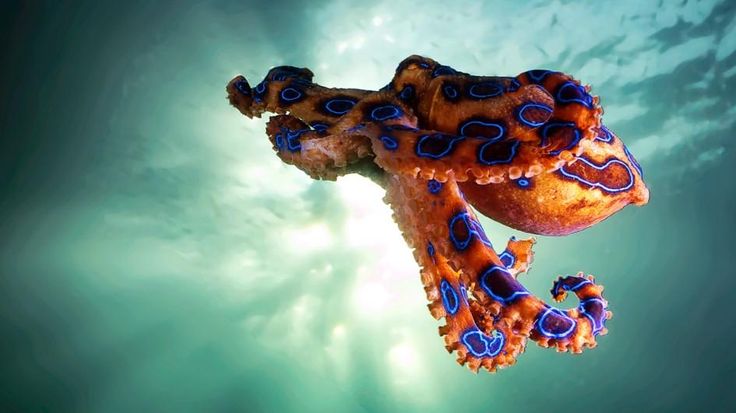Australia is infamous for its venomous snakes, spiders and exotic sea creatures. Here is a list of ten animals that are feared by both tourists and Australians alike.
- Sea fleas
I don’t think many of us knew that sea fleas were a thing until a Sam Kanizay, 16, went for a paddle at Melbourne’s Brighton Beach and made headlines across the globe with the photo of his legs bleeding profusely. Amid the hype, however, marine biologists who weighed in on the story said sea lice attacking beach goers is very uncommon. So, that brings us to our next creature… - Stingrays:
To many people’s dismay, Steve Irwin was not in fact killed by a huge prehistoric creature with teeth to match, but by a graceful sea creature. It seems to freak out tourists that our fearless Aussie animal lover, conservationist and ‘Wildlife Warrior’ could be killed by a stingray barb. Experts reassure us that stingrays are not known to attack humans-they will only attack if they feel threatened.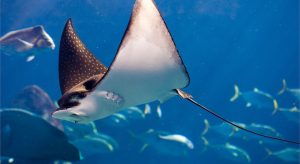
Source: National Geographic
- Great white sharks
Australia has the highest number of fatal shark attacks in the world, but they are also one of the worlds most misunderstood creatures. Shark species are known to attack humans if they are confused, with one wide consensus being that sharks will attack a surfer sporting a wetsuit, mistaking them for the seals and other larger marine mammals that they prey on. Another school of thought for the more coverage of shark attacks is that rising sea water temperatures are causing sharks to come closer to land, meaning that sharks and humans are inhabiting more of the same waters. - Crocodiles
In Australia we have both salt and fresh water crocodiles. Australian saltwater crocodiles are the largest reptile in the world with adult males weighing between 400 and 1000kg. Crocodiles are aggressive, colossal and territorial prehistoric creatures that inhabit waterways, beaches and rivers. They normally stick to small prey like fish and birds, but they have been known to kill unsuspecting people going for a dip, livestock and wild pigs who venture too close.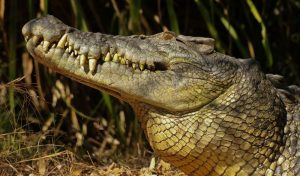
Source: Australian Geographic
- Box Jelly Fish
The Australian box jellyfish is an extremely poisonous and deadly jellyfish species which is found in warm, coastal waters around northern Australia. Box jellyfish have 15 tentacles that can be as long as 3 metres. The tentacles are each covered in around half a million microscopic darts filled with venom. Box jellyfish attack their victims by wrapping their tentacles around their prey. Extensive skin contact, like more than one tentacle wrapping around a victim, can be fatal within minutes without immediate medical treatment. Venom from a box jellyfish sting is very fast-acting and causes immense pain. If left untreated, the poisonous venom attacks the muscles around the lungs and heart and causes heart failure. Luckily the best treatment for a box jellyfish sting is pouring vinegar over the wound to deactivate any remaining sting cells on the skin. - 6. Eastern Brown Snake
The Eastern Brown Snake is fast, aggressive and its venom is ranked as the second most toxic of any land snake in the world. They thrive in populated areas, especially around wetlands and farms. If the eastern brown is disturbed, which it seriously doesn’t like because they have really bad tempers, it rises up off the ground ready to strike. Its venom can take more than one dose of antivenin to reverse its effects.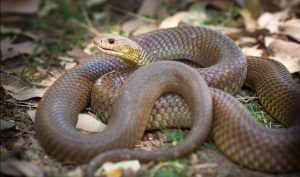
Source: Australian Geographic
- Sydney Funnel-Web Spider
The Sydney funnel web spider is an aggressive species of venomous spider native to Australia and found most commonly around Sydney. The species is found in both the suburbs and in bushland. The Sydney funnel web spider often has its encounters with humans when hiding in the garden or in a pair of shoes left at the back door. Their venom is extremely dangerous to humans, but since the antivenin was developed in 1981, there have been no recorded fatalities since. - Blue ringed octopus
The blue ringed octopus is a small species that lives in shallow coral reefs and in rock pools. When resting, the octopus is a pale yellow colour. The blue rings appear on the animal as a warning if it feels threatened. The octopus is not an aggressive creature, but it carries enough poison in its body to kill 25 adults within minutes. The bite is painless, but the toxic venom that is released causes paralysis of the motor system. So remember, you can look, but don’t touch!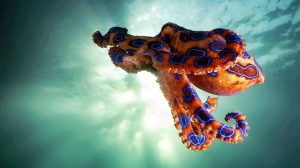
Source: National Geographic
- Australian Bull Ant
There are about 90 recorded species of bull ants across Australia. Bull ants are much larger than regular ants, are very alert and will swarm, chase or even jump onto intruders on their nests before stinging an intruder with multiple stings. These stings are painful and can cause an allergic reaction, depending on how many times a person or animal is stung. - Red Back Spider
The redback spider is a highly venomous spider which originates from Australia. The species likes to live in proximity to humans, so it isn’t uncommon to come across one in your garden shed. What makes them dangerous, though, is their potent venom. The redback spider is responsible for the majority of reported spider bites in Australia each year. Although painful, the scientific advancement of a redback antivenom means nobody has died of a redback bite for fifty years. Female redback spiders are instantly recognisable for the bright red stripe down the back of their black body.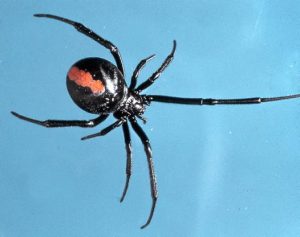
Source: Australian Museum

